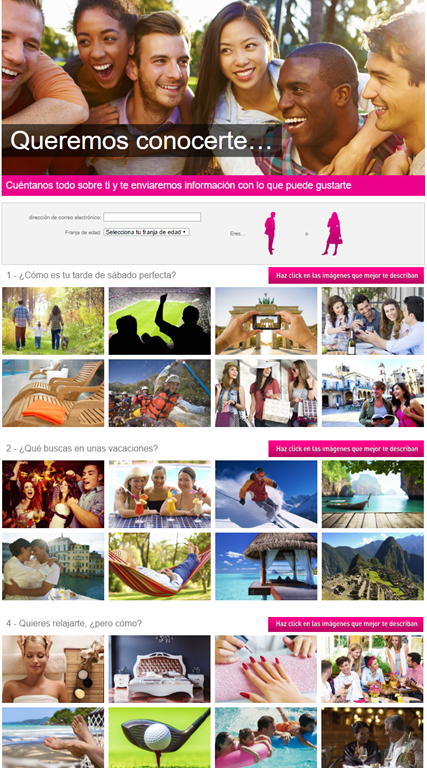Progressive registration as a good email recruitment practice

If we are going to do smart and effective email marketing, We will need to know our users: their interests, the different socio-demographic profiles of the database and their preferences.. Without this information we will not be able to segment or personalise content. It makes sense to think that the best time to "request" this information from the user is precisely in the registration process, since the user already comes with a favourable inertia. Let's bear in mind that if a user has arrived at our site or landing page, they come with a "current" interest in our brand. (they made a search, they interacted with an advert, it was a direct visit), so we will have to take advantage of their natural inclination to interact at that moment.
However, before launching into the creation of a registration form in which apart from the opt-inWhen we ask the user for preferential and socio-demographic information, we have to take into account the notion of "friction".. Friction is a negative force that slows down the natural flow of the user's navigation towards a goal.. The question is, which is better for us, a high friction or a low friction form?

We are at the moment of truth: we have succeeded, with effort and resources, in attracting a visitor to our site or landing page, and once there, the next step is for them to opt-in. We have to make the ratio of registrations/visits as high as possible. and to this end, it is clear that friction elements will need to be minimised.
Which elements generate friction in a form? Essentially 3:
- The amount of information requested. The more information we request from the user, the lower the conversion rate. We must be aware that the greater the number of fields, the greater the friction that is being generated in the registration process.
- The complexity of the process. A complex, unclear and confusing registration process will not help the registration process either.
- The sensitivity of the data. We can have a short and clear form, but if we ask for "sensitive" information, such as mobile phone number or ID, users will be less likely to register.
There is a conflict between the need to obtain relevant information from the user and the need to generate the least friction in the registration process. How can this be solved?
An effective measure is the so-called "progressive registration. It consists of proposing to the user a registration process in phases. In the first phase, the user will be asked only for the opt-in (low friction, high registrations/visits ratio). Once the user has opted-in, he/she will enter the second phase, in which, taking advantage of the inertia of the moment, we will ask the user to "enrich" his/her profile with more information. With this mechanic, we do not penalise the achievement of obtaining the highest possible number of registrations, and we take advantage of the inertia of the moment to obtain relevant information from the user.
To illustrate this, we present here an example from Lastminute and a progressive form in which the profile questions are presented in pictures.
Phase I. Email is requested.

Phase II. Once the email is captured, the rest of the socio-demographic and preferential information is requested.
